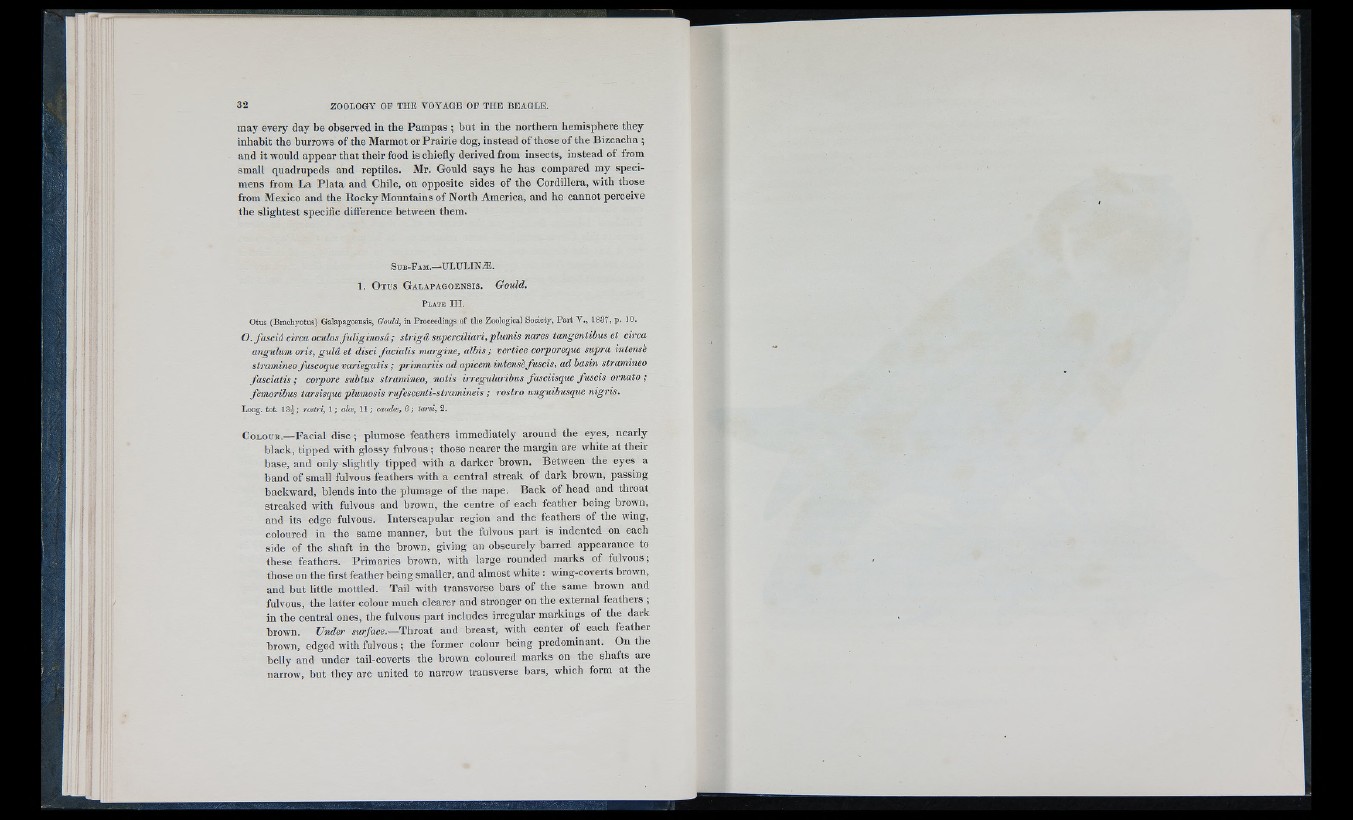
may every day be observed in the Pampas ; but in tbe northern hemisphere they
inhabit the burrows of the Marmot or Prairie dog, instead of those of the Bizcacha ;
and it would appear that their food is chiefly derived from insects, instead of from
small quadrupeds and reptiles. Mr. Gould says he has compared my specimens
from La Plata and Chile, on opposite sides of the Cordillera, with those
from Mexico and the Rocky Mountains of North America, and he cannot perceive
the slightest specific difference between them.
S u b - F am .— U L U L IN Æ .
1 . O t u s G a l a p a g o e n s i s . Gould.
P late I I I .
Otus (Brachyotus) Galapagoensis, Gould, in Proceedings of the Zoological Society, P a rt V., 1837, p. 10.
O. fasciâ circa oculos fuliginosá ; strigâ siqierciliari, plumis nares tangentibus et circa
angulum oris, giilâ et disci facialis margine, albis ; vertice corporeque supra intensé
stramineo fuscoque variegatis ; primariis ad apicem intensé fuscis, ad basin stramineo
fasciatis ; corpore siibtus stramineo, notis irregularibus fasciisque fuscis ornato ;
femoribus tarsisque plumosis rufescenti-stramineis ; rostro unguibiisque iiigris.
Long. tot. 13C rostri, I j alæ, 11; caudæ, 6 ; tarsi, 2.
C o l o u r .—Facial disc ; plumose feathers immediately around the eyes, nearly
black, tipped with glossy fulvous ; those nearer the margin are white at their
base, and only slightly tipped with a darker brown. Between the eyes a
band of small fulvous feathers with a central streak of dark brown, passing
backward, blends into the plumage of the nape. Back of head and throat
streaked with fulvous and brown, the centre of each feather being brown,
and its edge fulvous. Interscapular region and the feathers of the wing,
coloured in the same manner, but the fulvous part is indented on each
side of the shaft in the brown, giving an obscurely barred appearance to
these feathers. Primaries brown, with large rounded marks of fulvous;
those on the first feather being smaller, and almost white : wing-coverts brown,
and but little mottled. Tail with transverse bars of the same brown and
fulvous, the latter colour much clearer and stronger on the external feathers ;
in the central ones, the fulvous part includes irregular markings of the dark
brown. Under swr/rtce.—Throat and breast, with center of each feather
brown, edged with fulvous ; the former colour being predominant. On the
belly and under tail-coverts the brown coloured marks on the shafts are
narrow, but tliey are united to narrow transverse bars, which form at the